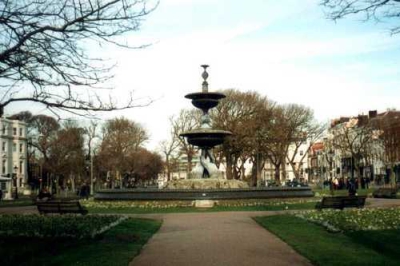Brighton Unitarian (9th June 2017)
 Unitarian ideas might sound startlingly modern to people who associate us with mainstream church traditions, but the Brighton Unitarian congregation has been around in various incarnations for more than two centuries. It has a long history of dissent and refusal to conform to outdated ideas. The congregation dates from 1793, when 19 people were expelled from a Baptist Church in Brighton for adopting Unitarian Universalist beliefs. In particular, they rejected the idea of predestination – that anyone God had not already picked for heaven was headed for everlasting Hell, no matter what they did on earth. For a while, the Unitarian congregation met in each other’s houses for worship and discussion and then occupied a chapel in Jew Street, near the present church.
Unitarian ideas might sound startlingly modern to people who associate us with mainstream church traditions, but the Brighton Unitarian congregation has been around in various incarnations for more than two centuries. It has a long history of dissent and refusal to conform to outdated ideas. The congregation dates from 1793, when 19 people were expelled from a Baptist Church in Brighton for adopting Unitarian Universalist beliefs. In particular, they rejected the idea of predestination – that anyone God had not already picked for heaven was headed for everlasting Hell, no matter what they did on earth. For a while, the Unitarian congregation met in each other’s houses for worship and discussion and then occupied a chapel in Jew Street, near the present church.
Some of the members left Brighton and some returned to their old church, but in 1819 the congregation had grown sufficiently to buy a plot of land for the present church building. This was purchased for £650 from the Prince Regent. The land was part of the gardens of the Royal Pavilion, but it appears the prince was in one of his frequent states of near-bankruptcy – thanks to his lavish spending on the Pavilion – and needed to raise cash fast. A commentator at the time called the land sale, “unbusinesslike”.
The Prince signed the Trust Deed, which states that the land was purchased for the use of “… a Society of Protestant Dissenters established or intended to be established in Brighton”. We are not sure how the small congregation raised the substantial sums involved, but we should be very grateful to a John Chatfield, a supporter of the Ditchling Unitarian congregation, who arranged the purchase and donated £200. He also introduced the British & Foreign Unitarian Association, which granted funds to the church.
 The church building was completed in August 1820, within 14 months of the land purchase. Dr Morell, a well-known classical scholar, was appointed as the first minister of the church. And, due in large part to his influence, the design of the church was inspired by the ancient Temple of Theseus in Athens. Its architect was Amon Henry Wilds – who built much of Brighton’s Kemp Town, as well as fashionable regency buildings across the town and the Victoria Fountain in the Old Steine.
The church building was completed in August 1820, within 14 months of the land purchase. Dr Morell, a well-known classical scholar, was appointed as the first minister of the church. And, due in large part to his influence, the design of the church was inspired by the ancient Temple of Theseus in Athens. Its architect was Amon Henry Wilds – who built much of Brighton’s Kemp Town, as well as fashionable regency buildings across the town and the Victoria Fountain in the Old Steine.
Some did not like the Greek style – The Royal Brighton Guide of 1827 said it was “built after the manner of a heathen temple”, which is ironically apt, given our wide acceptance of different traditions, including Pagan ones, nowadays. 350 people attended the opening service on 20 August 1820. The pediment on top of the Greek columns was originally engraved with ancient Greek script which, translated, was a New Testament quotation: “To God only wise, be glory through Jesus Christ.” But this was covered over in the late 1800s because hardly anyone could read ancient Greek, and cab-men were given to telling visitors that the place was a synagogue and the lettering Hebrew.
(Over the years, the church has had a habit of calling itself different things to reflect changing attitudes. The 1898 annual report described the church as a Free Christian Church. Prior to that, it had called itself Unsectarian. In 1901 it was called the Free Christian Church (Christ Church); by 1922, it became a Free Christian Church (Unitarian); in 1932 the name Christ Church (Unitarian) became generally used. Since the Second World War it has become known simply as Brighton Unitarian Church. These changes in the public name reflect the long-cherished Unitarian preparedness to be flexible in the way they see and portray themselves.)